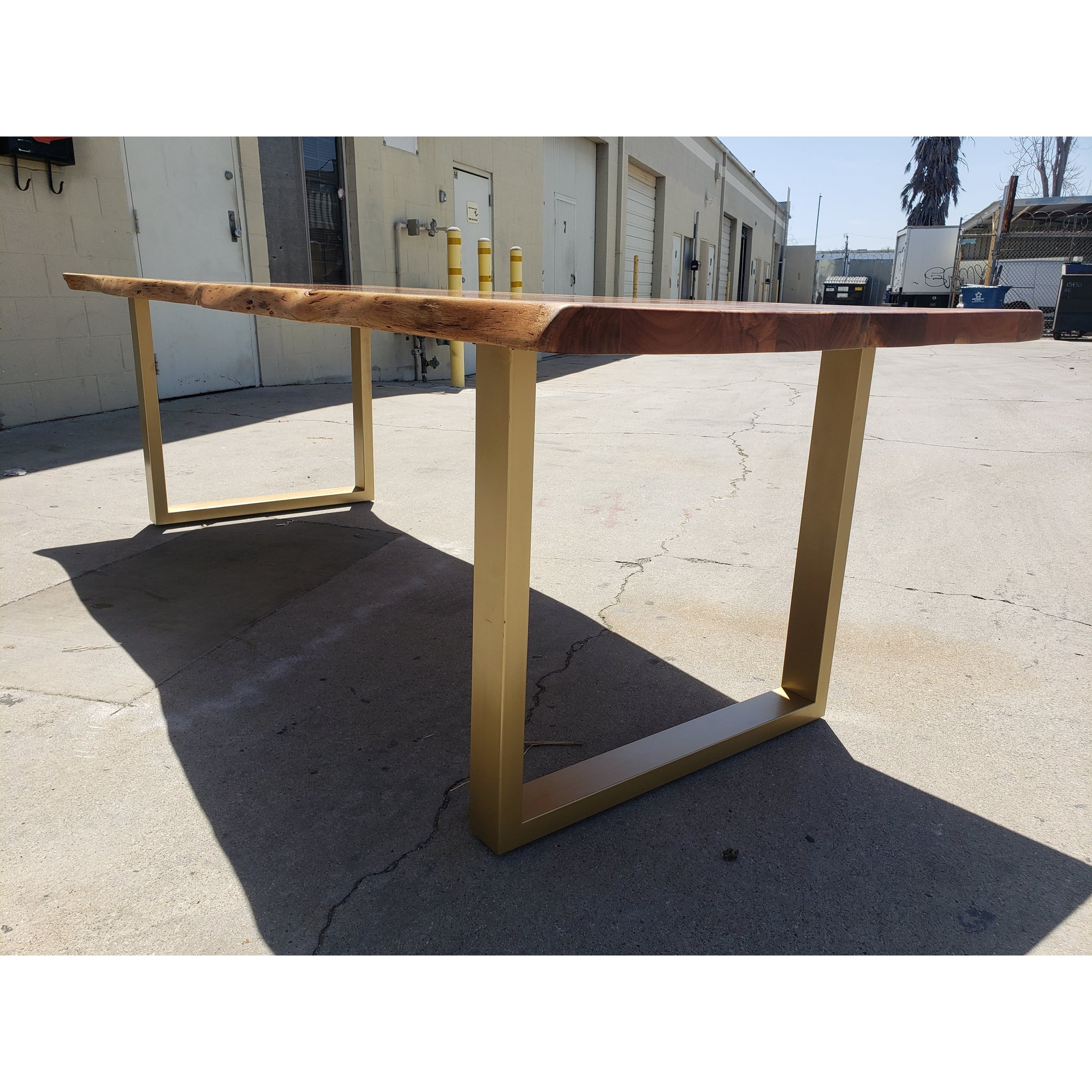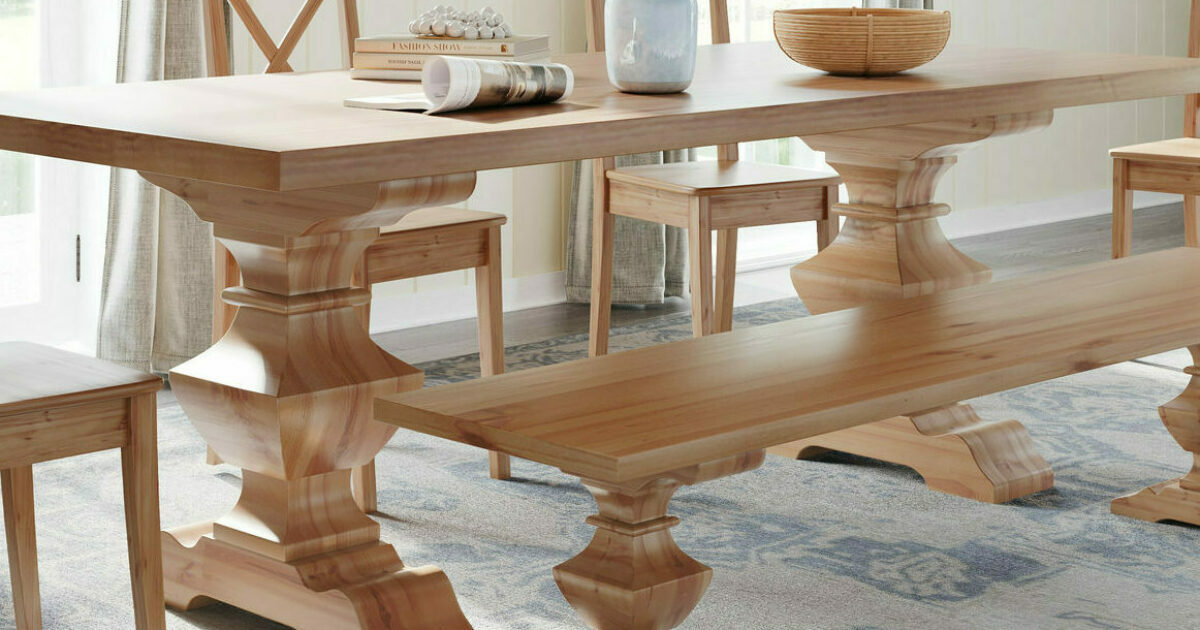Boost Your Dining-room's Visual with Premium Dining Table Legs Wood
Boost Your Dining-room's Visual with Premium Dining Table Legs Wood
Blog Article
Vital Factors To Consider for Choosing the Right Dining Table Legs Timber
Picking the appropriate wood for eating table legs entails a nuanced understanding of different variables that affect both capability and aesthetic appeal. The choice of wood type, varying from robust hardwoods to more delicate softwoods, plays a pivotal duty in ensuring sturdiness and security. Each of these components can significantly influence the general experience of your eating room.
Significance of Wood Kind

Hardwoods, such as walnut, maple, and oak, are typically chosen for their strength and resistance to wear. These sorts of wood supply a robust structure that can stand up to day-to-day usage, making them suitable for dining tables that experience frequent celebrations. On the other hand, softer woods like pine may be much more susceptible to damages and scrapes, which may not be excellent for high-traffic areas.
Additionally, the choice of wood can likewise impact the simplicity of maintenance. Some woods need regular oiling or securing to maintain their look, while others may be more forgiving. Ultimately, selecting the suitable wood kind involves stabilizing aesthetic considerations with practical requirements, guaranteeing that the eating table legs not just look appealing but also stand the test of time.
Analyzing Security and Toughness
When examining eating table legs, one have to think about the stability and stamina they offer to the overall structure. The legs are important in sustaining the tabletop and making sure the dining experience is secure and satisfying. A secure table is necessary for preventing wobbling or tipping, which can cause spills or crashes during dishes.
The choice of timber type substantially impacts toughness. Woods such as maple, walnut, and oak are typically a lot more robust and durable than softwoods like want or fir. Furthermore, the density and layout of the legs play a vital function; thicker legs or those with a tapered design can use much better support and security.

Visual Factors To Consider
While functionality is critical, the aesthetic allure of dining table legs can not be neglected, as they considerably influence the overall design and ambiance of the eating space. The selection of finish, timber, and layout can take away or improve from the table's aesthetic impact.

Finishes also play a critical duty in visual appeals. An all-natural coating can highlight the timber's intrinsic beauty, while painted or tarnished legs can introduce shade and character right into the room. The percentage and scale of the legs relative to the table top and surrounding furnishings blog has to be considered to make certain aesthetic equilibrium and communication.
Eventually, the eating table legs must not only offer a functional objective however also contribute to a natural and welcoming atmosphere, making them an important factor to consider in the total layout of the eating location.
Upkeep Needs
To guarantee long life and protect the elegance of wood dining table legs, regular maintenance is vital (Dining Table Legs Wood). Wood is a natural material that can be susceptible to damage from moisture, warm, and wear. Consequently, developing a routine care plan will substantially boost the toughness of your table legs.
Begin with regular dusting using a soft, lint-free towel to get rid of dirt and debris that can scrape the surface. For more extensive cleaning, make use of a light soap service and check out here damp cloth, preventing excess moisture that could permeate into the timber. It is advisable to apply a high-quality timber gloss or conditioner every few months to nourish the wood and keep its appeal.
Furthermore, take into consideration the atmosphere where the table is placed. Stay clear of straight sunshine, as it can cause fading, and utilize coasters or placemats to shield the surface area from warm and moisture. Attend to any kind of damages or scrapes quickly with suitable timber filler or touch-up pens to avoid further wear and tear. By adhering to these maintenance needs, you will certainly not only protect the aesthetic charm of your wooden table legs however likewise prolong their practical life-span.
Spending Plan and Price Factors
Budget and expense elements regularly play an essential role in the decision-making procedure for selecting wood dining table legs. When examining options, it is essential to develop a clear budget plan that lines up with your general furnishings financial investment. The expense of wooden dining table legs can differ substantially based on the kind of workmanship, timber, and layout intricacy.
Hardwoods such as oak, cherry, and walnut generally command greater costs because of their durability and aesthetic charm. In contrast, softer woods like ache might be much more cost effective but may not provide the same long life. Furthermore, personalized or artisan-crafted legs can sustain extra prices, showing the skill and time spent in their production.
It is additionally vital to consider the prospective long-term value of your investment. While choosing for lower-cost products may seem economically prudent at first, they may call for even more regular replacement or repair services, ultimately increasing total expenditure.
As a result, stabilizing high quality and price is vital. Prioritize materials that satisfy your visual preferences while guaranteeing they fit easily within your budget plan, permitting you to produce an eating location that is both visually attractive and functional.
Conclusion
Finally, choosing the suitable wood for dining table legs requires careful consideration of numerous variables, consisting of wood type, security, appearances, maintenance, and budget plan. Hardwoods such as oak and walnut provide exceptional durability and toughness, while design and thickness contribute to total security. Visual appeal and upkeep demands must align with individual preferences and lifestyle. Inevitably, a well-informed decision will enhance the durability and aesthetic appeal of the table, making certain satisfaction and capability for many years ahead.
Choosing the best kind informative post of wood for eating table legs is critical for both aesthetic appeal and structural integrity. Inevitably, choosing the ideal wood type includes balancing visual factors to consider with practical demands, making sure that the dining table legs not just look appealing but likewise stand the test of time.
It is a good idea to apply a high-grade wood polish or conditioner every few months to nurture the wood and preserve its gloss.
The expense of wooden eating table legs can vary substantially based on the kind of design, workmanship, and wood intricacy.
In conclusion, choosing the proper wood for dining table legs requires mindful factor to consider of different elements, consisting of timber type, security, aesthetic appeals, maintenance, and budget.
Report this page